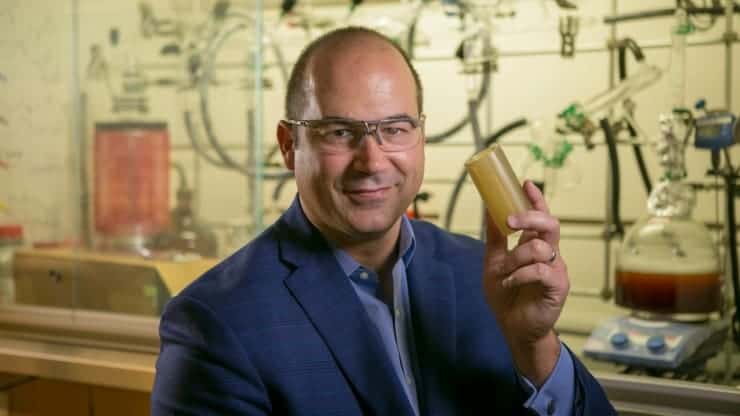A Duke-led team of scientists has developed a bio-compatible surgical patch that releases non-opioid painkillers directly to the site of a wound for days and then dissolves away.
The polymer patch provides a controlled release of a drug that blocks the enzyme COX-2 (cyclooxygenase-2,) which drives pain and inflammation. The study appears Jan. 10, 2021 in the Journal of Controlled Release.
When they started, “We were making hernia meshes and different antimicrobial films,” said Matthew Becker, the Hugo L. Blomquist professor chemistry at Duke, and last author on the paper. “We thought you could potentially put pain drugs or anesthetics in the film if you just sew it in as you’re stitching the person up, then you wouldn’t necessarily have to prescribe any opioids,” Becker said.
The work grew out of a $2 million grant Becker received from the state of Ohio at his previous institution to investigate non-opioid pain management, one measure toward fighting a nationwide epidemic of opioid drug abuse. Since arriving at Duke in 2019, Becker’s team has partnered with Duke pain control expert Dr. Ru-Rong Ji and his team to refine the idea.
The polymer itself, comprised of poly(ester urea) homopolymers and co-polymers, is also special, said Becker, who is also a professor of mechanical engineering and materials science in Duke’s Pratt School of Engineering.
“Most polymers that are used in medicine swell, and everything comes out at once,” Becker said. But this polymer erodes slowly, and its painkiller dose and longevity can be controlled simply by varying the surface area and thicknesses. “The film is about like a piece of paper.”
“If you can get four or five days of pain control out of the patch and not have to take those other pain drugs, not only do you avoid some of the side effects and risks of addiction, you’re concentrating therapy where you need it,” Becker said.
Rat studies also showed that the painkiller stayed in tissues close to the patch site, rather than dissolving into circulating plasma.
Becker said the patch should be able to provide three or four days of wound-pain management, which is the critical period for post-surgical pain. The implantable film would be particularly useful in endoscopic procedures and instances where the physicians and patients would like to avoid opioid exposure such as Cesarean births and pediatric surgeries. In studies with mice that mimic the neuropathic pain of diabetes, the pain patch was placed against a nerve and provided a four-day nerve block.
This research was sponsored by Merck Sharp & Dohme Corp, 21st Century Medical Technologies and the Ohio Third Frontier Opioid Challenge. Becker and co-author Natasha Brigham have filed provisional patent applications with the University of Akron Research Foundation. Becker also is a board member and equity holder in 21st Century Medical Technologies.
CITATION: “Controlled Release of Etoricoxib from Poly(ester urea) Films for Post-Operative Pain Management,” Natasha Brigham, Rebecca Nofsinger, Xin Luo, Nathan Dreger, Alexandra Abel, Tiffany Gustafson, Seth Forster, Andre Hermans, Ru-Rong Ji, Matthew Becker. Journal of Controlled Release, Jan. 10, 2021. DOI: 10.1016/j.jconrel.2020.11.052


